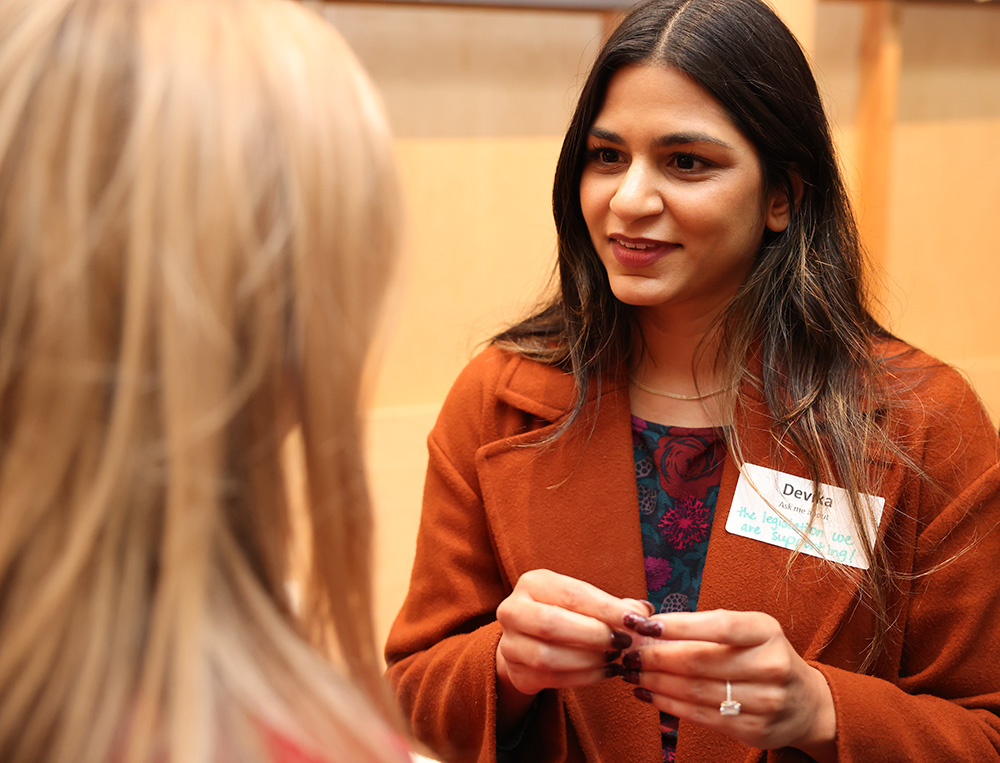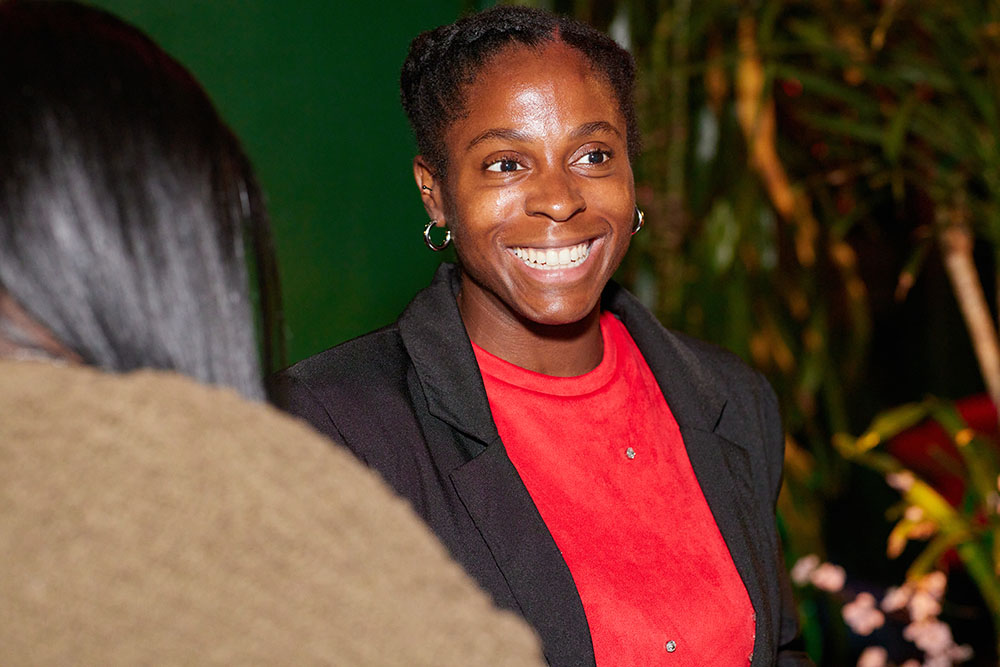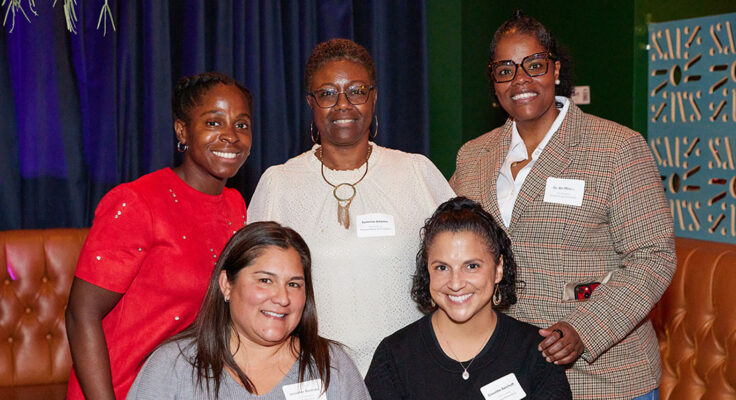The Kenneth Rainin Foundation believes that meaningful, sustainable progress in education comes from understanding and following the lead of those we serve. Our Community Advisory Council is a living example of this commitment, serving as a bridge between community wisdom and our grantmaking strategies. Launched in 2024, this Council of school and nonprofit leaders has shaped the design of a new funding program that recognizes schools as sites of change where principals, families, teacher-coaches, teachers and tutors all work together to ensure every child in Oakland has the literacy skills to thrive. We are partnering with six schools to test this grant before its wider rollout in 2026, and I wanted to share more about our process for developing the program.
This grant is inspired by the success of California’s Early Literacy School Block Grant. From 2020 to 2023 this program boosted reading proficiency in the lowest-performing elementary schools. This was achievable through teacher training that was grounded in evidence-based strategies, coaching for educators and flexible student funding. We saw an opportunity to build on its impact and believed we could replicate the results to make the case for policy shifts and sustained public funding. Over the past year and a half, our Community Advisory Council has been weighing in on what we should fund, what we shouldn’t fund and how we should approach grantee selection.
I have gained so much through our work together—they’ve asked questions and posed possibilities I wouldn’t have considered. Their unique knowledge and viewpoints have informed what would be practical and feasible. Engaging these leaders in the design has deepened our awareness of the factors that influence student access to resources and opportunities for learning to read. It also revealed some unexpected insights and tensions, which I describe below.
Why A Community Advisory Council?

In 2024, we were preparing to adapt our Education strategy. An evaluation and collaboration with Informing Change revealed opportunities to strengthen our impact, including investing in school-level initiatives as a primary lever for ensuring literacy proficiency. While we could have quickly drafted a grant program based on our initial insights, I know that including a range of perspectives early on results in fewer course corrections later.
As a grantee, I was part of the Foundation’s Community Strategy Council from 2020 to 2021. This Council helped the Foundation learn from, and ground its efforts in, the wisdom, priorities and realities of those who are closest to the issues it was trying to address. I saw firsthand how the Council supported the ability to better understand challenges, design and test solutions in partnership with stakeholders and refine ideas for maximum impact. I believed our new school grant would be stronger with stakeholder input, so we created space and time to incorporate their ideas.
A Values Driven Approach

The Foundation’s values and an intentional framework for decision-making inspired the original and second generation of the Council in 2024. Convening these leaders embodies our value of interdependence—their varied perspectives are crucial to our effectiveness. In selecting members, we also embraced equity, actively seeking representation from those who are close to and reflect the diverse communities our funding supports. The Council was facilitated by Stephanie Frenel of Fair Schools, a consulting firm that helps schools build equitable, healing-centered learning environments.
The Rainin Foundation’s collaborative decision-making framework guided our approach with the Community Advisory Council. This framework prompts us to consider hidden assumptions, thoughtfully identify who needs to be engaged and foresee any indirect negative impacts. While we acknowledge that some pitfalls may emerge, this tool encourages us to act deliberately to avoid or reduce their likelihood.
Convening these leaders embodies our value of interdependence—their varied perspectives are crucial to our effectiveness.
What Emerged Through The Process
The context shifts and robust feedback loops are critical to listening and learning.
It’s not enough to simply gather information. We also have to act on what we learn, including making sure that we share information with stakeholders and follow up consistently. Our goal is for our collaborators to see their contributions reflected in the process, the final product, or both.
The importance of this approach came a year into this work. The Council had helped us define three key priorities for making funding decisions, and it was time to test them. What we found was surprising: many stakeholders indicated they were already addressing the gaps we had identified as program priorities. This led to a crucial question: had the context evolved more quickly than we imagined since the time we first gathered input? Or was it possible that the Council’s conversations were influencing external decision makers and progress in ways we hadn’t anticipated? Either way, this realization highlighted how much the context can shift over time in positive ways. We were happy to see indicators of relatively fast progress and adjusted the program accordingly.
This experience affirmed how listening to our partners and applying their expertise strengthens trust and alignment. This reciprocal learning makes our grantmaking more responsive, grounded and effective.
Equity-focused decision-making can be complex and emotionally charged.
Whether selecting which school profiles could apply or defining the conditions for eligibility, the Council confronted the tension of making decisions that are sure to impact multiple communities. In one instance, this process surfaced the difficult realization that prioritizing some schools meant deprioritizing others. It was a moment of reckoning that illuminated just how hard it is to make decisions that will inevitably deny access to some.
In another example, the group’s initial criteria for the grant were so long that very few schools—especially those most in need—would qualify. We had anticipated a bias towards broad access to the funding opportunity and were surprised when the initial guidelines were quite extensive. This showed us how easy it can be for deeply ingrained systemic beliefs to shape our approach to equity, even when our intentions are to increase access. We took time to reflect and embrace a “less is more” mindset, so that those most in need of our support could benefit.
Listen closely, look for common threads and stay grounded in equity.
We understand that every perspective is unique, and no single solution will meet everyone’s needs. That’s why any significant strategic change we’ve made has been guided by what our grantees and partners told us needed to change. The biggest challenge lies in synthesizing diverse voices to inform our decision-making, while also avoiding drawbacks like changing strategies too frequently or assuming a single perspective represents a population or demographic that we serve.
Our goal is to consider multiple viewpoints as we figure out how to effectively close gaps, leaning into common themes while also acknowledging outlier experiences and unspoken needs. One example of a common theme for the school grant was retention. The Council universally agreed that a school would be well-positioned to champion literacy improvement if it retained 70% of its staff year-over-year.
Our goal is to consider multiple viewpoints as we figure out how to effectively close gaps, leaning into common themes while also acknowledging outlier experiences and unspoken needs.
Fostering generative collaboration requires that participants feel appreciated and well supported.
The overarching lesson from the Council is the profound importance of creating dedicated spaces for people to share their perspectives. We emphasized practical considerations like providing meals during our meetings, and every Council member was offered an honorarium for their time and invaluable contributions. After every convening, they expressed deep appreciation for the opportunity to participate and learn from peers and the feeling of being treated as professionals. This feedback reinforces that simply creating an intentional and respectful forum for collective insights is in itself a powerful and worthy act.
After every convening, members expressed deep appreciation for the opportunity to participate and learn from peers and the feeling of being treated as professionals.
Evolving for Future Impact
We wanted this grant program to reflect real needs and lived experiences. By inviting district, school and nonprofit leaders into the design process, we foster transparency and trust, which are essential for long-lasting transformative impact. The contributions of the Community Advisory Council have led to stronger relationships between the Rainin Foundation and our grantees.
When community members help shape a grant program, it’s possible some may become beneficiaries. In this case we invited six schools to apply—Burckhalter Elementary, Carl Munck Elementary, Franklin Elementary, Hoover Elementary, Horace Mann Elementary and La Escuelita Elementary. Three of these schools were represented on the Council and the other three were active in the early design stages. This one-year pilot focuses on schools that met the readiness criteria and were aligned with the grant goals. We know they will offer constructive feedback to strengthen the program ahead of its broader launch in late 2026.
Involving stakeholders means the grant program will likely evolve faster to accommodate real-time changes, and testing and piloting will give us the information to make aligned changes. This integrated approach ensures that our grantmaking is not just informed by the community, but truly co-created with it.

